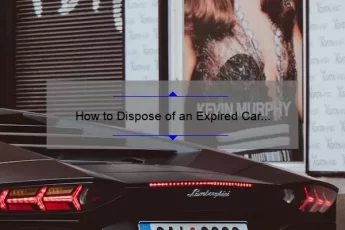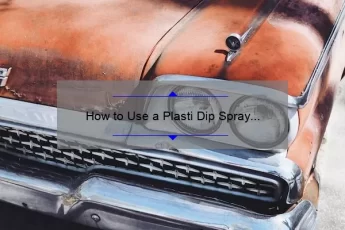One question you may be asking is, “Can I run E85 in my car?” The answer depends on the model and make of your vehicle. The largest manufacturer of E85 conversion kits is Flex Fuel U.S., which sells certified kits for certain vehicles and handles local installation. However, there are also plenty of “kits” on the market without EPA certification. Prices can range anywhere from $132 to $700 and may include just a box that plugs into your car’s computer. Also, it’s important to remember that converting gasoline-burning vehicles can void your warranty.
flex-fuel vehicle
Using E85 in your vehicle is a great way to cut your fuel bill. The fuel is a blend of gasoline and ethanol. It helps you save money and protect the environment. However, it’s important to note that not all cars are compatible with flex-fuel.
Some vehicles, such as the Ford Focus, can only run on one fuel, ethanol. Ford has a plan to offer a flex fuel version of the Mondeo in 2008 or 2010. Ford is also planning to introduce an FFV version of its Mondeo between 2008 and 2010. Several Volvo models can also run on ethanol and are available in Germany. And Dacia has been offering a Logan MCV with a 1.6-liter flex-fuel engine since 2011.
GM has also begun a major marketing campaign for E85 vehicles. It recently announced plans to open more E85 refueling stations across the country and partnered with VeraSun Energy Corp. to develop the infrastructure needed to support these vehicles. This partnership will help GM make its vehicles more widely available to consumers, and demonstrates its leadership in the industry.
E85 flex-fuel vehicles are becoming more popular in the US. Although the cost of E85 is higher than regular gasoline, it is still cheaper per gallon. A 2021 Ford F-150 pickup, for example, will get an average of 21 mpg on gasoline, and 16 mpg on E85. While this may sound like a huge difference, the lower cost per gallon may make up for the lower mileage.
There are other advantages to a flex-fuel vehicle. First of all, it can reduce your carbon footprint and improve your vehicle’s performance. In fact, some flex-fuel vehicles even boost horsepower and torque. However, there are some disadvantages as well. So before you buy one, make sure to research your options before making a decision.
Ethanol burns cleaner than gasoline, releasing less carbon dioxide into the air and contributing less to greenhouse gases. This fuel is also biodegradable and water-soluble, which makes it very cost-efficient. Additionally, flex-fuel vehicles receive a tax credit, which can often eliminate your tax responsibility.
Cost of converting to e85 fuel
When you convert a car to run on E85 fuel, you are reducing the amount of gasoline your car needs to run, and your maintenance bill will be much lower. However, the savings you get will depend on the type of vehicle and your driving habits. For example, switching from gasoline to E85 can significantly reduce carbon buildup on your pistons and valves. Furthermore, switching from gasoline to E85 can dissolve any existing buildup on your engine, particularly in high mileage vehicles.
E85 fuel is becoming a popular alternative fuel for vehicles. Some vehicles can easily be converted to run on E85 without making any changes to the engine. However, some older vehicles may require a more complicated conversion. Newer vehicles may only require replacing the fuel pump and fuel injectors, while older vehicles may require a more complete overhaul of other components.
E85 fuel is relatively cheap, and the cost of converting a car to run on E85 is low. It costs around $1.69 per gallon, which is about 15 percent less than gasoline. The downside is that E85 fuel does not offer any significant savings on the average car.
There are some additional costs, however. Some older cars must have their fuel systems redesigned in order to accept E85 fuel. While it may save some money, it will cause some damage to the car. The fuel itself can be corrosive and can damage soft metals. To avoid this problem, many E85 users send their cars to get their injectors flow tested before converting to E85 fuel.
Another benefit is that E85 fuel is compatible with most electric fuel pumps. If you are using a horizontal fuel pump, you must dry the ethanol before using it. You can also purchase zeolite, which is a product for drying ethanol. E85 fuel is about 85% ethanol and 15 percent gasoline. However, the initial investment for this process is small – just about one dollar per gallon.
E85 fuel is now available in most areas of North America. It will add octane to your car and increase horsepower. Proper ECU calibration will extract even more horsepower from your car. Furthermore, the higher octane will provide cooling effects to the combustion chamber of your car. E85 fuel will cost you approximately two cents a gallon, which is significantly cheaper than race gas, which can cost up to fifteen dollars a gallon.
Impact of cold weather on performance of e85 fuel-burning engine
Cold weather affects the performance of an e85 fuel-burning engine. Ethanol, which is commonly referred to as E85, becomes less volatile in cold weather, which can lead to a decrease in performance. This is due to the fact that E85 needs to warm up, and cold temperatures make the process more difficult. The result is that cold-weather E85 cars can’t perform as well as their gasoline counterparts.
During cold weather, e85 fuel is harder to start, and it takes longer to idle. This leads to poor performance and high emissions. Additionally, the lack of lubrication can present additional challenges. Therefore, drivers should make sure to tune their vehicles for operation in cold temperatures.
The performance of an e85 fuel-burning engine depends on a number of factors, including temperature and time of day. For example, in cold weather, the performance of an e85 fuel-burn-ing engine can be reduced if the ambient temperature is below 0 degrees Fahrenheit.
In order to calculate EER, researchers used measured data and computer simulations to simulate engine behavior. They then created an engine model with the AVL Boost software, based on the data collected from engine tests. The resulting simulations were then validated by adding ethanol to the engine. Various combinations of ethanol were added to the fuel mixture and their effect was measured.
Another benefit of using E85 is that the fuel has a higher octane rating than standard gasoline. It can reach 100-105 octane, whereas most premium gasolines have only 91-93 octane ratings. This helps drivers achieve higher boost pressure and ignition timing. This reduces the risk of detonation.
E85 fuel burns more efficiently than gasoline. It also lowers emissions of nitrogen oxide, CO, and other pollutants. As a result, a vehicle using E85 fuel can improve its fuel economy by up to 15%. However, ethanol’s cold-weather performance can be affected by extreme temperatures.
E85 has been shown to increase fuel economy in cars with direct-injection spark-ignition. It can reduce particle emissions in cars with TWC catalysts. In some cases, the fuel burning efficiency of E85 can decrease particle emissions, but it may not be completely equivalent to that of E10.








